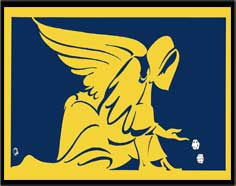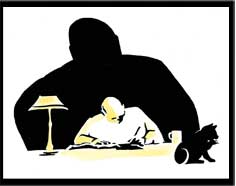The so-called Mr Asia syndicate existed from 1976 to 1979 and was the first major heroin importer and distributor in Australia. Until that time there had been little demand for heroin, and indeed most serious criminals, like the rest of society, regarded heroin dealers with contempt. But as demand ballooned, the profits to be made changed that. For a while the Mr Asia group was so extraordinarily successful – total imports were at least 200 kilograms – that it did a great deal single-handedly to spread heroin addiction in this country. Its combination of huge profits, extreme violence, and a relatively short lifespan set the template for numerous later heroin gangs.
The key personnel were New Zealanders, starting with Martin Johnstone, a successful marijuana importer who was referred to in a newspaper article of the time as “Mr Asia” for legal reasons, hence the group’s later name. He teamed up with Terence Clark, an ambitious small-time criminal and psychopath, who became the syndicate’s head. Clark recruited a much tougher criminal named Jim Shepherd. He had good contacts in the underworld in New Zealand and Australia, and proved to be an excellent Sydney-based organiser, both of distribution and of laundering and investing the group’s massive profits. In 2010 Shepherd published his memoirs, one of the most revealing of local criminal autobiographies. Thanks to this, and the Stewart Royal Commission into Mr Asia (1981 to 1983), an unusual amount is known about the workings of the syndicate, which provided one of the main storylines for the second series of the television drama Underbelly.

Two other people were essential to the syndicate’s success. One was Singapore resident and onetime ship steward Choo Cheng Kui (“Chinese Jack”), who sourced the heroin for the group in Asia and sealed it inside the suitcases used by couriers to bring it to Australia. This was a hugely important role and made Chinese Jack Clark’s equal when it came time to divide up the profits.
The other key man was Sydney law clerk Brian Alexander, who used his work in the criminal courts to achieve enormous influence by trading information and acting as middle man for criminals and corrupt police. When Clark decided to expand from New Zealand to Australia in 1977, he asked Shepherd how to go about obtaining police protection. Shepherd contacted Bob Trimbole, who put him onto Alexander, who arranged protection for the next two years. Police were receiving $10,000 a week by the end, while Alexander’s fee was that amount per month. In return, one of the biggest heroin operations Australia has ever seen received almost no attention from the police.
Clark broke into the Sydney market by using Shepherd and other toughs to beat up the opposition. Shepherd recalls in his book: “Baseball bats, iron bars, a .357 Magnum handgun and a sawn-off shotgun were all the persuasion we needed. Dealing in heroin is a particularly nasty business, populated by particularly nasty people, and if you are not strong enough to hold onto your territory or markets, you will be overrun by other tougher, stronger and more dangerous criminals.”
Soon Shepherd was running a large team of distributors out of a flat in Oxford Street, which was full of garbage bins containing cash and bags of heroin. The profits were invested in property, assets and businesses, and stashed in overseas bank accounts. By the end Terry Clark said he had a personal fortune of $50 million. Bob Trimbole provided advice and services, such as false identities – the gang used over 100 fake passports in its time. As a friendly gesture, Trimbole would sometimes provide tips on horse races he had fixed.
In June 1978, two of the syndicate’s couriers, drug addicts Doug and Isabel Wilson, were interviewed by police in Brisbane, and secretly recorded before being released. Corrupt police later sold the tapes of the interview to Brian Alexander, who sold them on to Terry Clark for at least $100,000. Clark listened to the tapes and learned the Wilsons had revealed details of the syndicate to the police. Clark had already killed three people, including syndicate member Harry Lewis, whom he also suspected of planning to talk to the police. He decided the Wilsons had to die too, and got Bob Trimbole to hire hitman James Bazley (who had killed Donald Mackay in Griffith in 1977). Bazley killed the Wilsons in Victoria in April 1979.
Clark moved to England to expand the business there, but acquired a cocaine addiction that further destabilised his already erratic judgment. In October 1979 he paid for the killing of syndicate founding member and friend Martin Johnstone, on account of various betrayals and failures.
This marked the end of the syndicate. The British police proved far more enthusiastic than their Sydney equivalents, and within week Terry Clark was arrested and later convicted for his involvement in Johnstone’s murder. He died of a heart attack in gaol in 1983. An unknown number of foreign banks have accounts in his name with large balances that will never be drawn on.
The Stewart Royal Commission was set up to look into Mr Asia, largely in response to the murder of the Wilsons. Once again, politicians had been provoked into action by criminals who had gone too far. Brian Alexander was called to give evidence, and certain police feared he would roll over, and in particular reveal who had sold him the tapes of the Brisbane interview with the Wilsons. Jim Shepherd says in his book that Neddy Smith told him Alexander was taken out on a police boat in December 1981 and dropped overboard off the Heads.
Shepherd himself fled the country and for years lived quietly in California. He came unstuck when stopped for a drink-driving offence and identified as an international fugitive. He was returned to Sydney and in 1986 given what was then the longest sentence for drugs in Australia – 25 years. Chinese Jack was sentenced at the same time, to 20 years.
Altogether, seven people involved in the syndicate were murdered and fourteen went to gaol for very long periods. Twenty others were given indemnity in return for evidence to the Stewart Royal Commission. Even by the standards of what was to come afterwards, Mr Asia was one of the biggest criminal enterprises Sydney has seen.
MAIN SOURCES: Mr Asia: Last Man Standing by James Shepherd; Big Shots II by David Wilson with Paul Robinson, edited by Bob Bottom; Can of Worms II by Evan Whitton; report of Royal Commission of Inquiry into Drug Trafficking, 1983.






You must be logged in to post a comment.